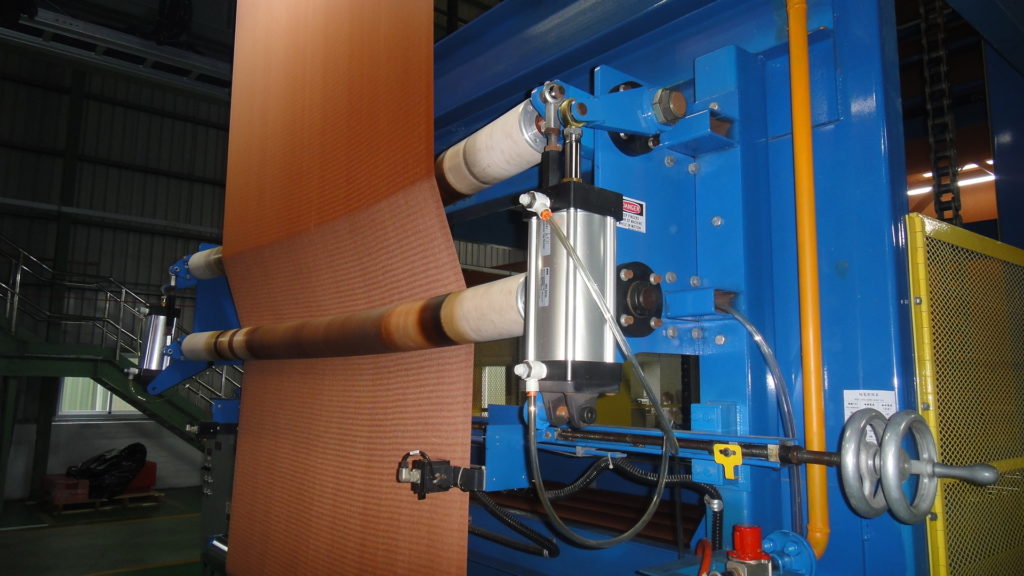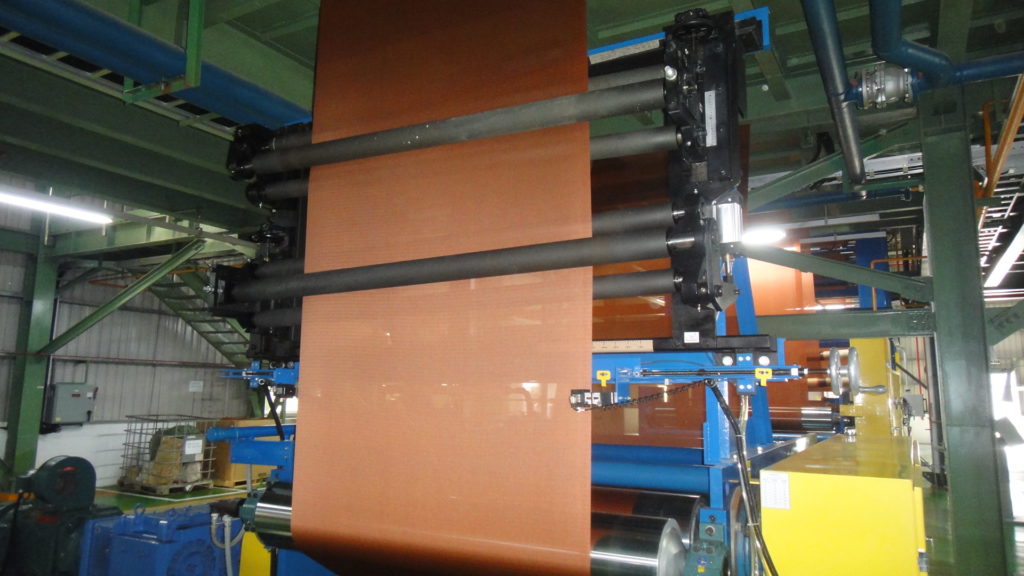Guiding and Spreading
Tire cord is a difficult web to control due to the nature of the product and it continually tries to narrow and neck down during the process for the following reasons:
- Different weave patterns with high warp and low weft
- High tension
- High speed
- Stretching/shrinking
Litzler guiding and spreading is specially designed to work with tire cord at high speeds to keep the fabric straight as it goes through the machine and to keep the fabric spread to the proper width at all times.
Rolliner (Three Finger Spreader)
- Litzler engineers invented and patented the Rolliner three-finger spreader in the 1950’s specifically to spread the selvedge (edges) of tire cord
- The modern Rolliner is a sophisticated spreading device designed for use in coordination with the surface winder to ensure a straight wound package – the Rolliner is located beneath the surface winder to spread the outer millimeter edges of the tire cord immediately prior to winding
- The Rolliner features sophisticated internal linkages and servo motor controls through a dedicated PLC /touchscreen
- The fingers feature low-drag bearings and special flame coated friction surface optimized for the key coefficient of friction for use with tire cord
Spreaders
- Individual PLC/touchscreen for each spreader, that is linked to the main PLC via Ethernet network – individual PLC/touchscreen allows for local setup and diagnostics and dedicated high speed resolution and response times
- High Tension Spreaders are normally located after every oven process step before a tension stand
- High Tension spreaders are capable of spreading fabric at tensions up to 10,000 Kg.
- The spreaders are a six-roll dual pivot design and the rollers are coated with a special friction material for optimal fabric grip
- Low Tension spreaders are used in the low tension areas of the machine (less than 1000 Kg) for additional spreading – integral to the accumulators and prior to the surface winder
- The Litzler low tension spreaders utilize dual long-lasting bow rolls
- The high tension and low tension spreaders share some characteristics for machine consistency: sensors and actuators
- Each spreader includes a pair of fixed 600 mm optical sensors to cover all the fabric widths on the machine – the sensors never have to be moved or adjusted to change fabric width – this is all automated through the LHMI system and the recipe management
- Dual High speed pneumatic actuators work independently on each side of the fabric to keep the spread setpoint
- There are three types of spreaders in the machine that all serve different functions: High tension, low tension, and Three Finger (Rolliner)
- Spreaders are all designed to keep the fabric spread to a set width and minimize shrinkage – this is a constant requirement throughout the machine to prevent the shrinkage from becoming permanent before the heat setting process
Guiders
- Guiders are supplied at critical locations to keep the fabric tracking on center through the machine
- The center guiders use a full width light sensor to keep track of the fabric – the sensors are stationary and output is controlled through the PLC – there are no moving parts and fabric width changes are automated through the PLC
- Guiders are located before and after the accumulators and before the surface winder
- Guiders include high speed pneumatic cylinder actuators and dedicated controllers linked to the PLC via Ethernet network



